This article was co-authored by Anthony Stark, EMR. Anthony Stark is a certified EMR (Emergency Medical Responder) in British Columbia, Canada. With over 11 years of experience, he has worked as an industrial medic and provided urban and rural paramedic services. He currently works for Mountain View Safety Services and previously worked for the British Columbia Ambulance Service. Anthony has a Bachelor of Engineering in Electrical, Electronics, and Communications Engineering from the Georgia Institute of Technology. He has completed the EMP Canada EMT Course and Swiftwater Awareness Training associated with the British Columbia Ambulance Service.
There are 18 references cited in this article, which can be found at the bottom of the page.
wikiHow marks an article as reader-approved once it receives enough positive feedback. In this case, 85% of readers who voted found the article helpful, earning it our reader-approved status.
This article has been viewed 35,646 times.
Shock refers to a potentially life-threatening medical condition that occurs when a person's body does not have enough blood flow. If this happens, the body's cells and organs can't obtain the oxygen and other nutrients needed to function, which might lead to permanent tissue damage and possibly even death. To help you evaluate whether someone is experiencing shock, learn to recognize the signs of shock, how to administer first aid, and how to prevent this condition from occurring in the first place.
Steps
Part 1: Recognizing Shock
-
1Seek medical help. Shock is a serious medical condition that can quickly worsen, so if you suspect a person might be experiencing shock, call 911 or your local emergency number as soon as possible. Medical and emergency professionals will know what to look for and how to effectively treat shock.[1]
-
2Understand the causes. Although any injury, illness, or disease that restricts blood flow can lead to shock, some medical problems are more likely to produce this condition than others. To evaluate whether someone might be suffering from shock, check the following list of some of the common causes of this condition and the terms for the type of shock that results:[2]
- Heart problems, including heart attack or heart failure, can cause cardiogenic shock.[3]
- A severe allergic reaction may lead to anaphylactic shock.[4]
- If someone has low blood volume due to heavy bleeding (external or internal) or even dehydration, he might experience hypovolemic shock.[5]
- When someone has a major infection, he might experience septic shock.[6]
- In the event of a brain or spinal injury that damages the nervous system, neurogenic shock can occur.[7]
- Traumatic events such as accidents, disasters or assaults can lead to physiological shock
Advertisement -
3Identify the symptoms. The symptoms of shock vary depending on the type of shock and the condition that caused the body to experience shock. Refer to the list below so that you can recognize some of the common symptoms associated with shock.[8]
- Low blood pressure
- Rapid pulse and breathing
- Sweating
- Shallow breathing
- Nausea or vomiting
- Dilated or enlarged pupils
- Weakness or fatigue
- Dizziness or fainting
- Skin that is cool, clammy, or pale
- Bluish lips and fingernails
- Anxiety, agitation, confusion, or changes in a person's behavior or mental status
Part 2: Administering First Aid
-
1Call 911 or local emergency services immediately. Remember, if you suspect someone is experiencing shock, it is best to seek medical help as soon as possible. Don't wait for symptoms to get more severe, as shock symptoms can progress rapidly.[9]
-
2Begin CPR if necessary. If the person is not showing signs of life (ie: no breathing, no carotid pulse), start CPR. An untrained person should only attempt chest compressions, not rescue breathing. Ask the 911 operator to talk you through the process if you don't already know how.[10]
- You might find this wikiHow article on how to perform CPR helpful.
-
3Provide treatment. Depending on your location, it might be some time before emergency services are available to help. Taking the following steps will help stabilize the person experiencing shock if her condition appears to deteriorate and it is taking time for medical help to arrive.[11]
- Offer first aid for visible wounds and injuries.
- Make the person comfortable. Provide her with a blanket and loosen restrictive clothing.[12]
- Keep her from eating or drinking. Since the person may be unable to swallow, it's best to avoid giving her anything to eat or drink to reduce the risk of choking.
- Turn her onto her side if she vomits or begins bleeding from the mouth. This will help prevent choking. Proceed with caution if you think the person might have a spinal injury.
- If a person with a possible spinal injury is choking, try to keep her head, neck, and back in line while rolling both the body and head together.[13]
-
4Place the person in the shock position. Only attempt this if the person does not have an injury to the head, neck, leg, or spine. This position helps improve blood flow to vital organs.[14]
- Lay him on his back and elevate his legs above the heart (about 8 – 12 inches).
- Do not elevate his head or place a pillow under his head.
- If you think this position might cause the person any pain, it's best to leave him lying flat and wait for emergency help to arrive.
-
5Monitor the person's breathing. Even if the person seems to be breathing normally, continue to monitor her condition until help arrives. You can provide this information to emergency services when they arrive.[15] f
-
6Stay with the injured person until emergency services arrive. You can help reassure and comfort the individual who might be experiencing shock. In addition, you can also monitor the person's condition until help arrives and provide valuable information to the paramedics.[16]
Part 3: Preventing Shock
-
1Know your risk. One of the most effective ways to prevent shock is to understand who is at risk. The conditions and situations listed below increase the likelihood of shock:
- Severe injury
- Blood loss
- Allergic reactions
- Anemia
- Infections
- Dehydration
- Heart problems
- Drug and alcohol use
-
2Reduce these risks. While you can't anticipate all injuries, accidents, or diseases that might lead to shock, you can take some preparatory measures against this medical condition.
- For example, if you or someone you know has a known allergy, make sure to carry an epinephrine pen to reduce the risk of anaphylactic shock or a severe allergic reaction.[17]
- Stay hydrated to prevent the body from going into hypovolemic shock.[18]
- Research ways to reduce the risks of heart disease and cardiogenic shock and what activities and situations can increase risk of shock in these individuals.[19]
-
3Maintain a healthy lifestyle.[20] Regular exercise and a healthy diet prevent some of the major diseases that increase risk of shock. You should also schedule regular physicals and talk with your doctor or a medical professional about any underlying conditions that might lead to shock.
-
4Enroll in a first-aid class. Taking a first-aid class will help you get the training you need to assess whether someone might be experiencing shock and offer advice on how to care for that person until medical professionals can take over.[21]
- Local hospitals and community centers often organize these classes or can direct you to resources in your area.
- You can also find courses through the American Red Cross, the American Heart Association, St. John Ambulance and the National Safety Council.
Warnings
- Do not move a person in shock with a known or suspected spinal injury; doing so may cause permanent damage.⧼thumbs_response⧽
- Only emergency services and first responders can properly treat shock.⧼thumbs_response⧽
- Do not give a person in shock anything to eat or drink, including water. The person may be unable to swallow and may choke.⧼thumbs_response⧽
- Shock is a life-threatening condition requiring prompt medical treatment. Don't wait.⧼thumbs_response⧽
- Even if the patient has lost a limb, you should treat shock before you concern yourself with preserving the limb.⧼thumbs_response⧽
References
- ↑ https://medlineplus.gov/ency/article/000039.htm
- ↑ https://www.ncbi.nlm.nih.gov/books/NBK531492/
- ↑ https://medlineplus.gov/ency/article/000185.htm
- ↑ https://medlineplus.gov/ency/article/000844.htm
- ↑ https://medlineplus.gov/ency/article/000167.htm
- ↑ https://medlineplus.gov/ency/article/000668.htm
- ↑ https://my.clevelandclinic.org/health/diseases/22175-neurogenic-shock
- ↑ https://www.betterhealth.vic.gov.au/health/conditionsandtreatments/shock#symptoms-of-shock
- ↑ https://medlineplus.gov/ency/article/000039.htm
- ↑ https://www.nhsinform.scot/tests-and-treatments/emergencies/first-aid#cpr
- ↑ https://www.sja.org.uk/get-advice/first-aid-advice/bleeding/shock/
- ↑ https://www.nhsinform.scot/tests-and-treatments/emergencies/first-aid#introduction
- ↑ https://www.nhsinform.scot/tests-and-treatments/emergencies/first-aid#the-recovery-position
- ↑ https://medlineplus.gov/ency/article/000039.htm
- ↑ https://www.nhsinform.scot/tests-and-treatments/emergencies/first-aid#what-to-do-after-an-incident
- ↑ https://www.betterhealth.vic.gov.au/health/conditionsandtreatments/shock#symptoms-of-shock
- ↑ https://medlineplus.gov/druginfo/meds/a603002.html
- ↑ https://my.clevelandclinic.org/health/diseases/22795-hypovolemic-shock
- ↑ https://medlineplus.gov/ency/article/007115.htm
- ↑ https://www.health.harvard.edu/blog/healthy-lifestyle-5-keys-to-a-longer-life-2018070514186
- ↑ https://cpr.heart.org/en/


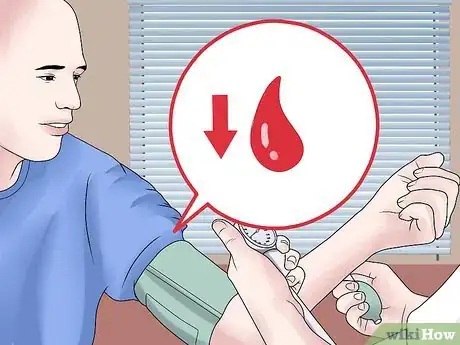

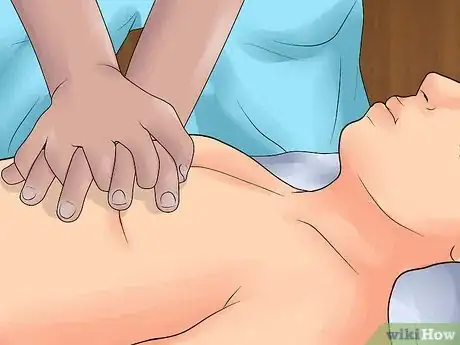

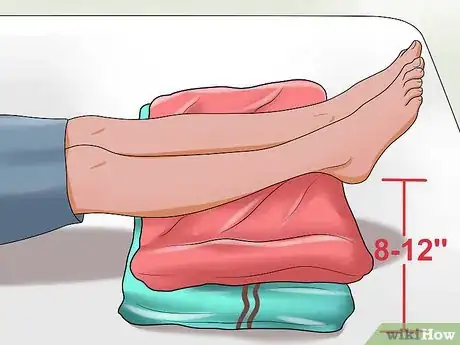
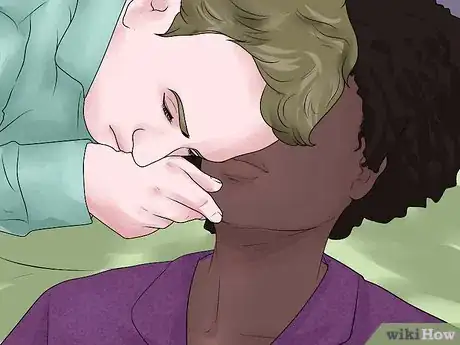


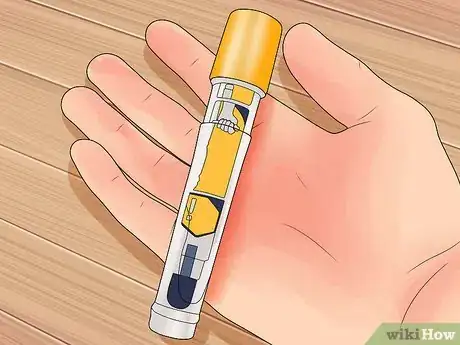

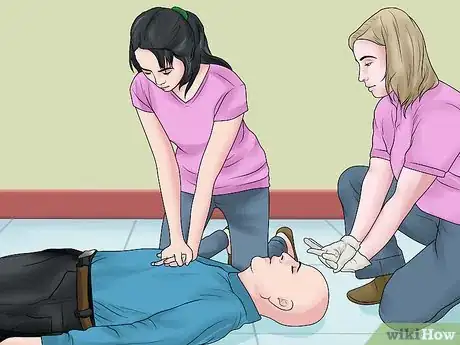










-Step-13-Version-3.webp)












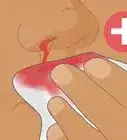






































Medical Disclaimer
The content of this article is not intended to be a substitute for professional medical advice, examination, diagnosis, or treatment. You should always contact your doctor or other qualified healthcare professional before starting, changing, or stopping any kind of health treatment.
Read More...